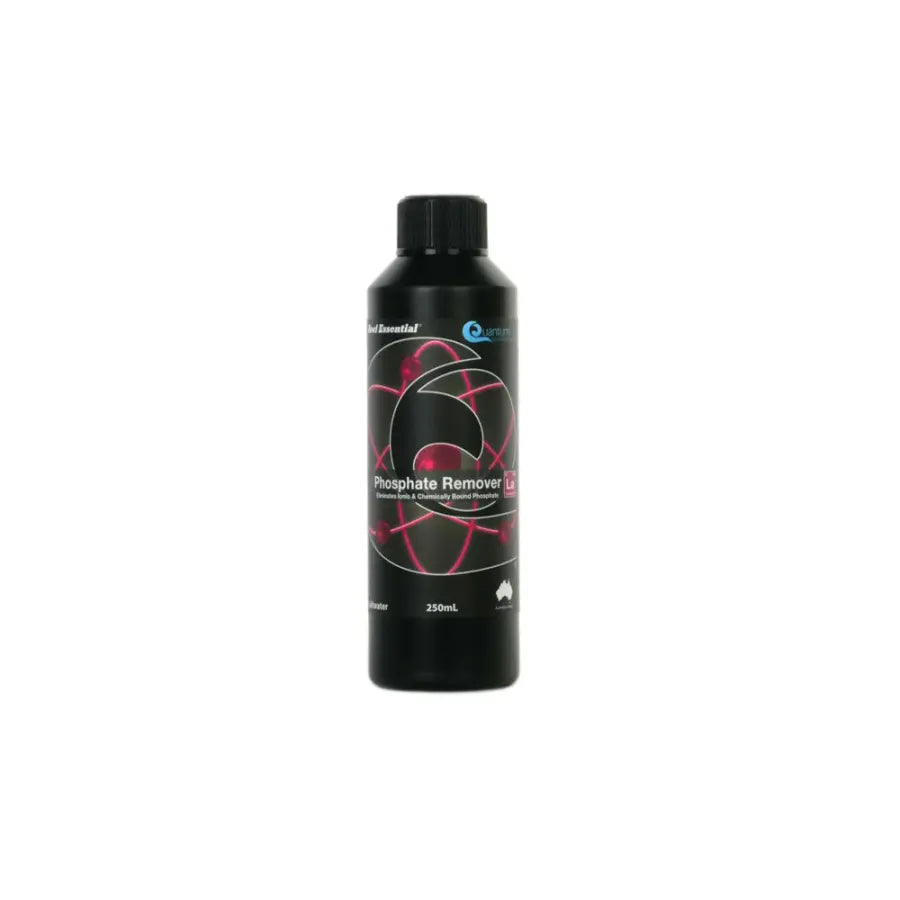Quantum Phosphate Remover
Quantum Phosphate Remover
Couldn't load pickup availability
Phosphate Remover
While phosphates are a primary nutrient source, and are an essential element in a healthy saltwater environment, excess phosphates can have detrimental impacts on the health of your marine life. High phosphate concentrations can lead to aggressive algae blooms in your tank, increased brown tissue growth in your corals (which can mask their natural vivid pigment), and reduced calcium carbonate uptake (which can negatively impact your corals’ skeleton growth).
Phosphates exist as ionic and chemically bound by calcium. This causes fluctuations of calcium. In addition, it causes false readings of low phosphate, due to test kits not being able to test for bound phosphate. This is a concern if you are not using a quality phosphate remover, as you cannot rely on your test readings to be accurate.
Our Phosphate Remover is designed to eliminate both ionic and chemically bound phosphate in marine and reef aquariums. The media and carbon sources quickly remove the ionic phosphate. Note, however, that it will take longer to remove the bound phosphate, due to its high stability.
Our Phosphate Remover will precipitate out both ionic and chemically bound phosphate and place it in existing filter wool/socks. A fine white film building on the glass indicates that you are overdosing. We recommend adjusting your dose and using our White Film Remover Padsto safely clean any buildup from your tank.
Contents:
– Deionized water
– Purified lanthanum
Directions:
Shaking this product is not required prior to use. You can use the cap as a measuring cup, a full cup is approximately 8ml of solution. Make sure to rinse out the cap after each use.
This product must be used in saltwater aquariums with a protein skimmer, and added to a high water flow. Be careful to not overdose; a white film will start to accumulate on the tank glass if you are using too much Phosphate Remover.
Dosing:
We recommend following the dosing guidelines below when using this product.
- 0.03 - 0.25 ppm = 0.1 - 1.0 ml per day/100l/26G
- 0.25 - 1.0 ppm = 0.5 - 2.5 ml per day/100l/26G
- 1.0 - 5.0 ppm = 1.0 - 5.0 ml per day/100l/26G
- 5.0 - 10 ppm = 5.0 - 10.0 ml per day/100l/26G
- 10 ppm = 10.0 ml per day/100l/26G
Share

Shop More
-

Freshwater Aquarium Fish
Fish ship out on Mondays and Tuesdays to ensure their safety during their...
-

Live Aquatic Plants
Plants ship out on Mondays and Tuesdays to ensure their safety during their...
-

Fish Tank Supplies
All orders are shipped out on Mondays and Tuesdays. Find everything you...
-

Aquariums & Stands
Looking to upgrade your setup? Visit Natural Environment Aquatix in Jacksonville, FL...






